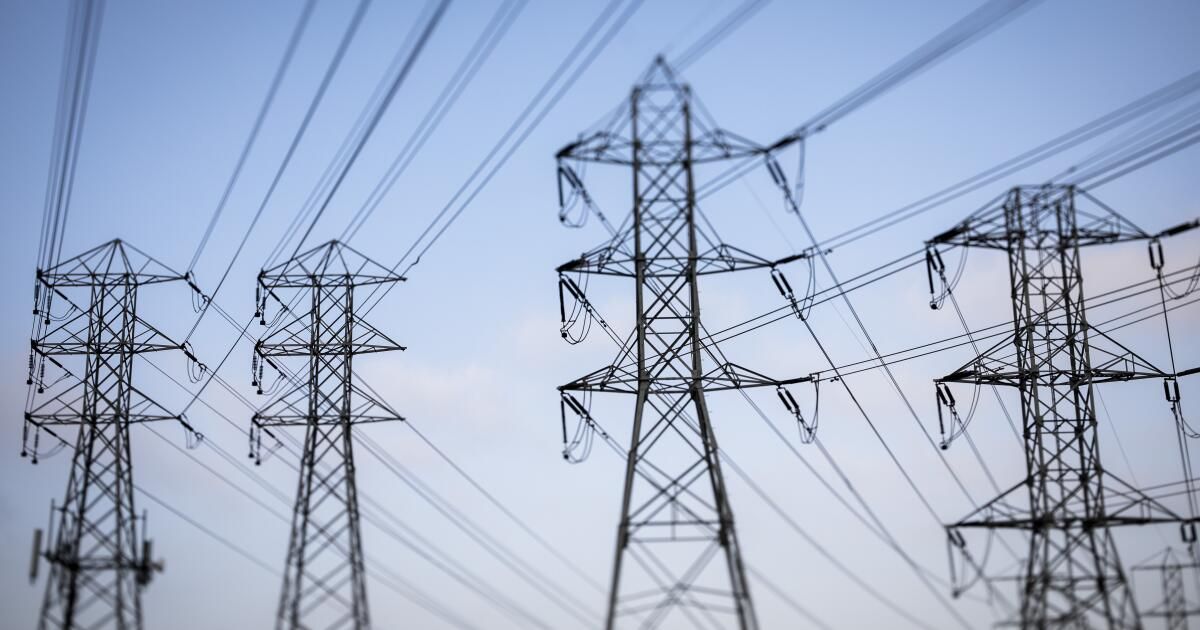California has some of the highest electricity rates in the country and energy bills are rising rapidly. This is a problem because it makes it harder for people to afford to switch from fossil fuels to clean electric cars and appliances that are essential to combating climate change.
Who wants to invest thousands of dollars in a heat pump or induction cooktop only to be punished with higher bills?
But there is a proposal from the California Public Utilities Commission that would ease the burden by changing the way customers of the state's three big investor-owned utilities are billed. Instead of paying per kilowatt-hour at increased rates to cover capital and maintenance costs, electricity customers would pay a modest flat rate (about $24 a month for most households) and a lower rate per kilowatt-hour. kilowatt-hour. It's a well-thought-out approach to modernizing California's electric rates that adheres to a 2022 law that requires the commission to adopt income-based flat rates, and does so without any burdensome new income verification program as had been proposed. .
A change is necessary because the existing rate structure used by Southern California Edison, Pacific Gas & Electric and San Diego Gas & Electric, which serve most California residents, is based almost exclusively on the amount of electricity you consume each client. Those usage-based rates cover everything, including grid, pole and wire maintenance, subsidies for low-income customers, rooftop solar and energy efficiency programs, wildfire mitigation and other infrastructure costs.
This payment system may have been appropriate decades ago as a way to encourage energy conservation, but it is increasingly at odds with policies pushing residents to electrify their homes and vehicles.
It also places too much burden on low-income customers. Energy use does not vary as dramatically as income, so Californians who can least afford it are spending a larger share of their income supporting utility infrastructure than middle- and upper-class households who can.
Under the proposal released last month, most electricity customers would be charged a flat rate of $24.15 on their monthly bill (this would not apply to people who live in Los Angeles or some other cities that have your own electrical service company). That's the same amount Sacramento Municipal Utility District customers pay each month. Low-income households that qualify for discounted rates based on attendance programs You would pay a flat rate of $6 to $12 per month.
At the same time, consumption-based rates would drop by 5 to 7 cents per kilowatt-hour, depending on the utility, making them more affordable for Californians hardest hit by rising bills, including households in warm inland areas and those who electrify their homes. houses and cars.
It is much more modest than proposals from investor-owned utilities, which sought fixed charges as high as $92 per month. The plan also eliminates the controversial income verification requirement that would have been necessary to charge higher rates to high-income households. (Low-income Californians must already prove they are eligible to qualify for discounted rates.)
That idea raised some hackles. Earlier this year a group of Democratic lawmakers legislation introduced repeal the fixed charge mandate, part of a large energy bill approved in 2022. They should be withdrawn, as the commission's proposal is a reasonable compromise that rejects the radically high proposals of the utilities.
The proposal has the support of consumer watchdog groups such as the Utility Reform Network and the independent group the PUC. Public Defender's Office. If adopted, customers would start seeing flat rates on their bills starting in late 2025 or early 2026.
The biggest benefits would go to low-income Californians, whose monthly bills would be reduced on average, and to those who live in warmer inland areas and who have to use more energy to cool their homes. Customers who power their homes and vehicles with electricity would save between $28 and $44 a month under the new billing structure. Customers in colder regions of the state may see increases in their monthly bills, but they have lower than average bills to begin with. It seems like a reasonable trade-off to ensure that all Californians have an incentive to go electric.
To be clear, this new billing plan does not solve the problem of rising electricity bills, and state regulators and legislators must get serious about rejecting requests for continued rate increases and holding these monopolies accountable for maintaining costs. low. Otherwise, the critical resource upon which the future of our planet and our economy rests will continue to become less affordable and undermine California's climate policies.












